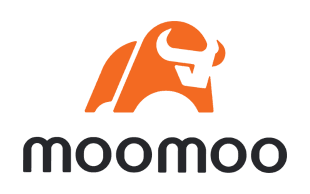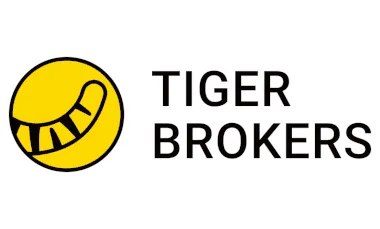Our top pick for
24/5 trading

Intel Corporation is a semiconductors business with stocks listed in the US. Intel shares (INTC) are listed on the NASDAQ and all prices are listed in US Dollars. Its last market close was US$19.06 – a decrease of 6.29% over the previous week. Here's how to invest if you're based in Australia.
Our top pick for
24/5 trading

Our top pick for
Copy trading

Our top pick for
Mobile app

Intel's shares were split on a 2:1 basis on 30 July 2000. So if you had owned 1 share the day before the split, the next day you would own 2 shares. This wouldn't directly have changed the overall worth of your Intel shares – just the quantity. However, indirectly, the new 50% lower share price could have impacted the market appetite for Intel shares which in turn could have impacted Intel's share price.
| 52-week range | US$18.51 - US$50.6023 |
|---|---|
| 50-day moving average | US$23.0252 |
| 200-day moving average | US$28.5324 |
| Target price | US$24.4165 |
| PE ratio | N/A |
| Dividend yield | US$0.495 (2.24%) |
| Earnings per share (TTM) | US$-3.74 |
Use the fields above to explore the returns from a historical investment. Please refer to the charts further up this page to see performance over 5 years, or other periods. Past performance doesn't indicate future results. Capital is at risk.
Historical closes compared with the last close of $19.06
| 1 week (2024-12-13) | -6.29% |
|---|---|
| 1 month (2024-11-20) | -20.62% |
| 3 months (2024-09-20) | -12.73% |
| 6 months (2024-06-20) | -37.75% |
| 1 year (2023-12-20) | -58.35% |
|---|---|
| 2 years (2022-12-20) | -27.91% |
| 3 years (2021-12-20) | -61.57% |
| 5 years (2019-12-20) | -67.67% |
We currently don't have a partnership for that product, but we have other similar offers to choose from (how we picked these ):
The technical analysis gauge below displays real-time ratings for the timeframes you select. However, this is not a recommendation. It represents a technical analysis based on the most popular technical indicators: Moving Averages, Oscillators and Pivots. Finder might not concur and takes no responsibility.
Valuing Intel stock is incredibly difficult, and any metric has to be viewed as part of a bigger picture of Intel's overall performance. However, analysts commonly use some key metrics to help gauge the value of a stock.
Intel's "price/earnings-to-growth ratio" can be calculated by dividing its P/E ratio by its growth – to give 0.5713. A low ratio can be interpreted as meaning the shares offer better value, while a higher ratio can be interpreted as meaning the shares offer worse value.
The PEG ratio provides a broader view than just the P/E ratio, as it gives more insight into Intel's future profitability. By accounting for growth, it could also help you if you're comparing the share prices of multiple high-growth companies.
Intel's EBITDA (earnings before interest, taxes, depreciation and amortisation) is US$10.4 billion (£8.2 billion).
The EBITDA is a measure of a Intel's overall financial performance and is widely used to measure stock profitability.
Over the last 12 months, Intel's shares have ranged in value from as little as US$18.51 up to US$50.6023. A popular way to gauge a stock's volatility is its "beta".
Beta measures a share's volatility in relation to the market. The market (NASDAQ average) beta is 1, while Intel's is 1.026. This would suggest that Intel's shares are a little bit more volatile than the average for this exchange and represent, relatively speaking, a slightly higher risk (but potentially also market-beating returns).
| Revenue TTM | US$54.2 billion |
|---|---|
| Gross profit TTM | US$26.9 billion |
| Return on assets TTM | -0.26% |
| Return on equity TTM | -15.6% |
| Profit margin | -29.42% |
| Book value | 23.099 |
| Market capitalisation | US$83.2 billion |
| EBITDA | US$10.4 billion |
TTM: trailing 12 months
Dividend payout ratio: 133.93% of net profits
Recently Intel has paid out, on average, around 133.93% of net profits as dividends. That has enabled analysts to estimate a "forward annual dividend yield" of 2.24% of the current stock value. This means that over a year, based on recent payouts (which are sadly no guarantee of future payouts), Intel shareholders could enjoy a 2.24% return on their shares, in the form of dividend payments. In Intel's case, that would currently equate to about $0.495 per share.
Intel's payout ratio would broadly be considered high, and as such this stock could appeal to those looking to generate an income. Bear in mind however that companies should normally also look to re-invest a decent amount of net profits to ensure future growth.
Intel's most recent dividend payout was on 31 August 2024. The latest dividend was paid out to all shareholders who bought their shares by 6 August 2024 (the "ex-dividend date").
Environmental, social and governance (known as ESG) criteria are a set of three factors used to measure the sustainability and social impact of companies like Intel.
When it comes to ESG scores, lower is better, and lower scores are generally associated with lower risk for would-be investors.
Total ESG risk: 12.89
Socially conscious investors use ESG scores to screen how an investment aligns with their worldview, and Intel's overall score of 12.89 (as at 12/31/2018) is excellent – landing it in it in the 8th percentile of companies rated in the same sector.
ESG scores are increasingly used to estimate the level of risk a company like Intel is exposed to within the areas of "environmental" (carbon footprint, resource use etc.), "social" (health and safety, human rights etc.), and "governance" (anti-corruption, tax transparency etc.).
Environmental score: 2.18/100
Intel's environmental score of 2.18 puts it squarely in the 2nd percentile of companies rated in the same sector. This could suggest that Intel is a leader in its sector terms of its environmental impact, and exposed to a lower level of risk.
Social score: 4.06/100
Intel's social score of 4.06 puts it squarely in the 2nd percentile of companies rated in the same sector. This could suggest that Intel is a leader in its sector when it comes to taking good care of its workforce and the communities it impacts.
Governance score: 5.65/100
Intel's governance score puts it squarely in the 2nd percentile of companies rated in the same sector. That could suggest that Intel is a leader in its sector when it comes to responsible management and strategy, and exposed to a lower level of risk.
Controversy score: 3/5
ESG scores also evaluate any incidences of controversy that a company has been involved in. Intel scored a 3 out of 5 for controversy – a middle-of-the-table result reflecting that Intel hasn't always managed to keep its nose clean.
Intel Corporation was last rated for ESG on: 2019-01-01.
| Total ESG score | 12.89 |
|---|---|
| Total ESG percentile | 8 |
| Environmental score | 2.18 |
| Environmental score percentile | 2 |
| Social score | 4.06 |
| Social score percentile | 2 |
| Governance score | 5.65 |
| Governance score percentile | 2 |
| Level of controversy | 3 |
Intel Corporation designs, develops, manufactures, markets, and sells computing and related products and services worldwide. It operates through Client Computing Group, Data Center and AI, Network and Edge, Mobileye, and Intel Foundry Services segments. The company's products portfolio comprises central processing units and chipsets, system-on-chips (SoCs), and multichip packages; mobile and desktop processors; hardware products comprising graphics processing units (GPUs), domain-specific accelerators, and field programmable gate arrays (FPGAs); and memory and storage, connectivity and networking, and other semiconductor products. It also offers silicon devices and software products; and optimization solutions for workloads, such as AI, cryptography, security, storage, networking, and leverages various features supporting diverse compute environments. In addition, the company develops and deploys advanced driver assistance systems (ADAS), and autonomous driving technologies and solutions; and provides advanced process technologies backed by an ecosystem of IP, EDA, and design services, as well as systems of chips, including advanced packaging technologies, software and accelerate bring-up, and integration of chips and driving standards. Further, it delivers and deploys intelligent edge platforms that allow developers to achieve agility and drive automation using AI for efficient operations with data integrity, as well as provides hardware and software platforms, tools, and ecosystem partnerships for digital transformation from the cloud to edge. The company serves original equipment manufacturers, original design manufacturers, cloud service providers, and other manufacturers and service providers. It has a strategic agreement with Synopsys, Inc. to develop EDA and IP solutions; and ARM that enables chip designers to build optimized compute SoCs on the Intel 18A process. Intel Corporation was incorporated in 1968 and is headquartered in Santa Clara, California.
We've compared the fees and features of 40 trading platforms to find the best picks for options traders in Australia.
Webull is a broker with zero-commission trading and a suite of tools to help you invest.
The best day trading platforms in Australia offer low fees and are packed full of features essential for algorithmic trading.
We used Finder's proprietary algorithm to find Australian-listed companies that have strong fundamentals and have a share price under $5.
Big gainers included NoviqTech, Octava Minerals and Singular Health Group.
Top gainers included SSR Mining Inc, Appen and Insignia Financial.
If you're thinking of trading stocks with Tiger Brokers, check out our review of this online broker's fees, safety and pros and cons first.
Find cheap stock brokerage in Australia when buying and selling shares on the ASX and other international exchanges.
A beginner's guide to options trading in Australia. Read the step-by-step process and compare brokers to start trading.
Follow these tips to find the best share trading platform for you.